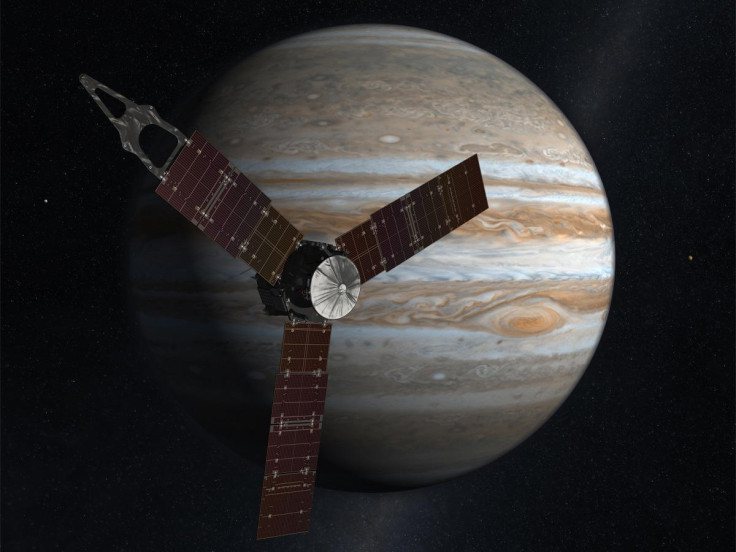Nasa's Juno spacecraft becomes 'fastest object ever made' during mission to Jupiter
Nasa's Juno spacecraft has become the fastest object ever made by humanity after clocking in speeds of over 160,000mph during its five-year voyage to Jupiter, the biggest planet in our solar system. Next month, on 4 July, the Juno probe will decelerate in orbit around the gas giant to probe a rich atmosphere that is thousands of times thicker than Earth's, in order to find out more about the mysterious planet.
Launched in 2011, Juno is the first solar-powered spacecraft that is made to operate at such a great distance from the Sun. According to Nasa, the four-tonne probe carries three 30ft (9m) solar arrays and nearly 20,000 individual solar cells to power it during its journey.
Nasa says the goal of the mission is to "understand the origin and evolution of Jupiter, look for a solid planetary core, map its magnetic field, measure water and ammonia in deep atmosphere and observe its auroras".
Chris Lintott, professor of astrophysics at Oxford University and presenter of the BBC's The Sky at Night programme, told The Sunday Times: "Juno's mission is to help us understand how Jupiter formed and thus what happened in the early days of the solar system 4.5bn years ago. For example, pinning down the amount of water in the atmosphere might show whether Jupiter began life as a rocky planet like Earth, or collapsed directly [from a cloud of gas], rather like a star."
Mystery has long surrounded Jupiter – which is more than 300 times the size of Earth. According to Nasa, the June mission will last two years, before the planet's strong radiation will destroy its on-board instruments.

Andrew Coates, professor in planetary science at University College London's Mullard Space Science Laboratory, said: "Jupiter is a planet of total extremes. It holds twice the mass of all the other planets put together and its atmosphere has amazing bands of coloured gases that rotate in opposites, but we have never known what lies underneath or if it has a rocky core. Juno could answer many of those questions."
Where is Juno now?
"As of May 6, 2016, Juno is approximately 450 million miles (724 million kilometers) from Earth. The one-way radio signal travel time between Earth and Juno is currently about 40 minutes.
"Juno is traveling at a velocity of approximately 60,000mph (about 26.9 kilometers per second) relative to Earth, 15,000mph (about 6.7kmps) relative to the Sun, and 13,000mph (about 6kmps) relative to Jupiter.
"Juno has now travelled 1.74bn miles (2.8bn kilometers, or 18.73 astronomical units) since launch, and has another 19 million miles to go (31m kilometers, or 0.20 AU) before entering orbit around Jupiter."
Source: Nasa Mission Pages
Juno will make 53-day laps around Jupiter before starting the "science phase" of the mission. At that time, the craft will analyse what lies beneath Jupiter's clouds and send the findings back to the eager scientists on Earth.
Scott Bolton, Juno's principal investigator at the Southwest Research Institute in San Antonio, said: "Juno is all about pushing the edge of technology to help us learn about our origins. We use every known technique to see through Jupiter's clouds and reveal the secrets Jupiter holds of our solar system's early history."
© Copyright IBTimes 2025. All rights reserved.





















